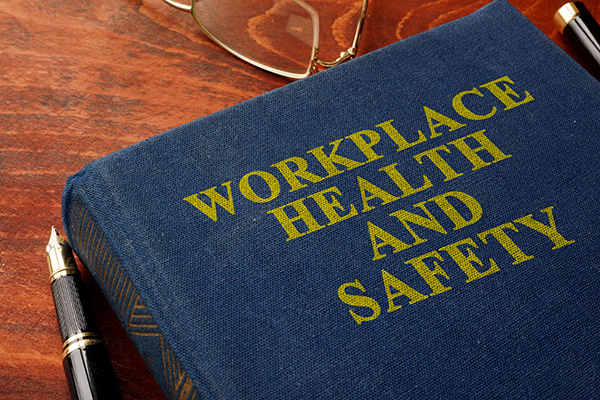7 Steps to Ensuring Your Business is OHS Compliant

Safety at work should be the number one policy that business owners should impose. Regulation has been one of the things many business owners sigh over as they can increase costs and decrease efficiency, all the while being mandatory.
One of the many regulations that businesses may be familiar with is that of work safety. Business owners would reason that while safety is a major concern for them, the regulations are overly cautious to the point of stifling the growth of the business. It may also be reasoned that a well-trained employee who knows what they are doing is the middle ground. Not only will a well-trained employee be able to perform safely, but they may also have the proper know-how on how to do work more efficiently. The well-trained employee has been the reason most businesses may value training more than the day to day safety regulations that are imposed.
One example for well-trained personnel rather than the day to day OHS regulation would be in carpentry. Safety regulations require that when an employee is handling a circular saw to perform their task, it should be used for its intended purpose. Using a circular saw aside from cutting is a highly dangerous practice. Making slots for various joints can be a time-consuming task that requires acceptable precision.
Following regulations, a poorly trained employee may not see the connection between the two. But an employee who has the know-how and has been professionally trained will at once see that they could use the circular saw for cutting the required slots. They could cut the slots without having to place the lumber into a machine, without positioning it, and without costing so much time.
So, the debate has been settled, businesses are better off with training their employees. Training should be prioritized more than a day to day safety compliance – wrong.
Safety regulations are more than just burdens to productivity. While it could be said that safety regulations hamper innovation for both the business and the employee, it does have a valuable reason for its existence. Safety regulations are construed as being one-sided – working for the employee only. But the truth is that safety regulations are enacted for the protection of both the worker and the business.
Accidents are very costly to both of the parties – employee and employer. Accidents can even be more damaging to a business due to the financial repercussions. Having lost a worker will entail lost productivity. Added costs for benefits and injury treatment present a problem. There could also be litigation resulting from the incident. And for businesses who have clients or consumers who have a penchant for trustworthy business, a business’ reputation can seriously be damaged.
To put it bluntly, a single incident can reverse a promising business and lead it to bankruptcy. Economics aside, having a safe working environment is a moral undertaking. It should be strived for by any business owner.
Knowing that safety should be one’s primary concern in business, how do you do it?
 In Sothern Australia, there are two work WHS (Workplace Health and Safety) regulations that are in place. The primary law is that of the Work Health and Safety Act 2012 (SA). Along with the Work Health and Safety Regulations 2012 (SA), both laws work in tandem to ensure safety in the workplace, and act as South Australia’s Occupational Health and Safety Standards. Both laws ensure that certain practices and policies are met in ensuring a healthy and safe working environment that is guaranteed for both the business and especially the worker.
In Sothern Australia, there are two work WHS (Workplace Health and Safety) regulations that are in place. The primary law is that of the Work Health and Safety Act 2012 (SA). Along with the Work Health and Safety Regulations 2012 (SA), both laws work in tandem to ensure safety in the workplace, and act as South Australia’s Occupational Health and Safety Standards. Both laws ensure that certain practices and policies are met in ensuring a healthy and safe working environment that is guaranteed for both the business and especially the worker.
Since workplace health and safety have been codified into laws, it, fortunately, does not take an accident or injury to happen before serious offense is made. Some businesses may be inclined to undertake steps to ensure that a safe and healthy work environment is created. Although bearing good intentions, some measures may not fully follow WHS laws and regulations. A haphazard undertaking of WHS laws is therefore strongly discouraged.
So, what does a business do now?
One thing is for sure, WHS regulations must be met. Meeting requirements or complying with the requirements can be daunting for new business owners so to save the work of guessing, here are 7 steps to ensure that your business is OHS compliant.
1. Perform a Self-Check
Before you get started with anything else, it helps that you look in the mirror first. Have an inspection of your business. You might be tempted to inspect the equipment and environment, and stop for the day. But it also helps that practices are reviewed. Processes are also another point to check. Certain processes might be okay, safe even but under a closer look, certain processes could be a major source of injury.
By themselves, equipment wouldn’t hurt anybody. But under false practices and flawed processes, such equipment could prove to be fatal. After inspection, keep a record of everything. Keep a careful note of what the problem is, and what it could result to. Also, write down your preliminary solutions for said problems. During this process, you are free to write down as many as you see fit. One reason for many accidents and injuries in the workplace are mundane things that get overlooked. It helps that at this stage, you become over vigilant of your inspection. Do not be afraid of writing down anything that you may see fit.
2. Plan. Plan. Plan.
Minds win wars, careful strategical and tactical thinking makes any form of weapon powerful and any wielder invincible – the same can be said with any business. Now that you have clearly seen the flaws and potential hazards that your business can pose to both itself and to your workers, it is now time to sift through them. From the preliminary solutions you have written down, make a clear and concise pathway for ensuring that those flaws are fixed.
Planning for many business owners may seem to be counter-intuitive since dangers are in need of a solution as soon as possible. But planning prevents the overuse of limited resources. Planning also ensures that you are able to effectively resolve any problems without wasting effort and resources. Businesses will find that planning before acting can save time.
3. Ask Your Workers
The primary problem with ensuring a safe workplace is overlooking things. While business owners can be sure of themselves that they have thoroughly inspected all equipment and process, being in the frontline is still different. Ask workers about the workplace and what they think of the equipment, safety, and productivity. This step will create effective communication with your workers and will help catch things that you may have overlooked.
This step also makes flawed practices or processes obvious. Like the example above with carpenters using a circular saw for slot cutting, most business owners may not know such practices if they have not had the time to chat with their workers. Workers might accept certain practices and not know the dangers.
4. Give Proper Training and Refreshers
To prevent the development of dangerous practices in the workplace, training helps. Ensure that before an employee even touches a piece of equipment, they are professionally trained. Nothing is safer than an employee who knows what they are doing and are confident in doing their task.
While training discourages dangerous practices, it does not prevent it from happening. Workers may forget certain tasks and create dangerous, time-saving practices themselves, so it helps that a refresher be regularly done to let them know what a safe practice is from a dangerous one.
5. Keep Tabs
Keep records of everything – accident reports, worker suggestions, and concerns, process changes, etc. Records help us see the bigger picture and guide us towards the things that need attention. Compliance is one thing, staying compliant is another. By keeping records, you are also protecting yourself from ill-advised decisions. Records can also help in future investigations.
6. Thoroughly Investigate Any Accidents
All big problems start with the smallest; all accidents start with a bump. Accidents do not occur miraculously. Accidents start out with something whether it is a crack on the wall, a bent ladder step, or faulty electronics. It is important that we catch an accident before it can go finish itself. By looking at the small accidents, we can gain insight into what can happen and how we can prevent it before it goes out of hand.
7. Instill a Culture of Safety
Finally, the South Australian WHS laws and regulations are simply words and cannot save someone who does not have a hard hat from falling debris. People forget words, but they cannot do the same with habit. To ensure continued compliance with WHS laws, it is important that not only it is followed but that the business and its workers keep a habit of working safe – a culture of safety. Prioritizing safety above anything else will ensure that a business continues to prosper along with its workers. By fostering a safety culture, we are less likely to forget and less likely to be injured.




